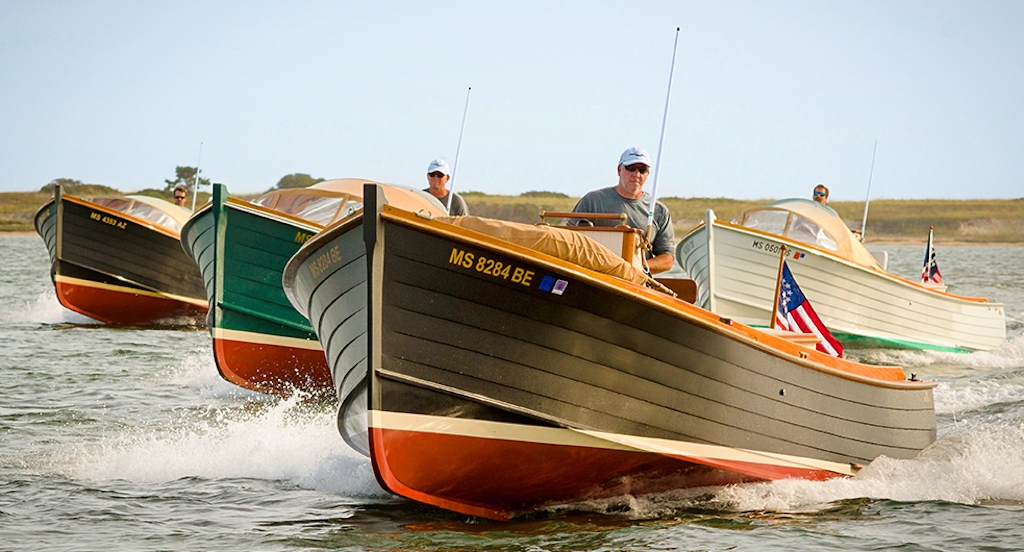How a childhood interest in nature and building wooden boats led to James Donovan conserving 350 acres of working Maine forestland.
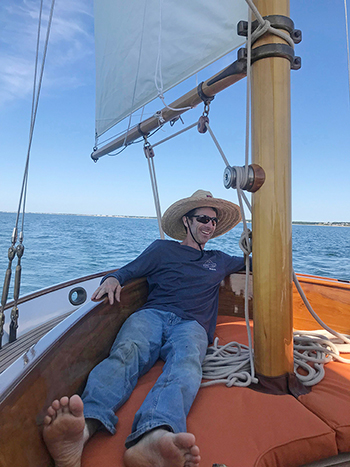
James Donovan sailing
This past winter, NEFF celebrated a land-protection win that served as the perfect cap to our 75th anniversary year. James Donovan, co-owner of First Light Boatworks in Chatham, Massachusetts, contacted NEFF in August 2018 looking to purchase and conserve recently harvested Maine timberland. NEFF staff steered him toward a variety of tracts, including one in Hiram. James went on to purchase 353 acres in Hiram, and in December 2019 donated the land to NEFF. The property is now known as the Merrill Mountain Community Forest.
While Merrill Mountain came together in a year and a half, the journey that led to James becoming an active conservationist was decades in the making. NEFF staff members listened to James’ account of this journey—complete with tales of sailing the high seas—during a recent interview, and we’re pleased to include a condensed version here.
As the interview made clear, James doesn’t just share NEFF’s commitment to forest conservation, but also NEFF’s belief that wood is an eminently useful, versatile and beautiful material. He makes use of it in a very different field: NEFF advocates for tall mass timber buildings and other sustainable wood products, and James expertly handcrafts wooden boats.
Planting the Seeds
James grew up on Cape Cod in Harwich facing Nantucket Sound, and spent his childhood immersed in nature, whether he was playing in the woods or out on the water. He also enjoyed early, hands-on lessons from his grandfather.
“My grandfather was a lifelong commercial fisherman and part-time boat builder,” James said. “When I was 11 years old, my older brother and I were dropped off at our grandparents’ place every Saturday for six months to build a 10-foot wooden boat with him, and then I went on to build and sell several dinghies on my own.”
While James was giving boatbuilding a trial run as a career, his grandparents were also broadening his geographic horizons by taking the family on regular trips to a camp in Lexington, Maine.
“I didn’t travel as a kid, so going to central Maine was a big deal for me, and it was basically mind-blowing to see the difference in ecology and geology,” he said. “I remember to this day encountering that rich conifer smell for the first time.”
The family made this trip two or three times a year until James was 15, and spent their time there hiking, climbing mountains, canoeing, and learning about the woods.
“My grandfather went to Maine every November to hunt, and was able to teach us about different trees and animal tracks,” James said. “Between his lessons and how different Maine was from Cape Cod, I was completely enamored of northern New England forests as a child. So that’s where some of those seeds of conservation came from.”
In his early teen years, James also started paying attention to conservation back home on the Cape, where a number of land conservation efforts were underway.
“I privately celebrated each victory, but didn’t get involved at that point,” James said. “What struck me most at that age was seeing a forested piece of land I played on as a kid get bulldozed.”
James soon turned much of his attention to career development, and ended up working at the nearby Arey’s Pond Boat Yard from the ages of 16 to 23; he learned the “yacht-building side of things” and other key skill sets. The owner let him build a 30-foot wooden sailboat during his spare time, and it ended up being “one of the defining experiences” of James’s life.
He built the boat traditionally with wood and metal—and without modern materials like plywood or glue. The hull was caulked with cotton and fastened with copper rivets.
“I discovered that my real passion is traditional wooden boat building,” James said. “It’s a process that requires extensive and unique skills, and where every piece is shaped by human hands.”
While James had come to prefer the traditional approach, he was still happy to build wooden boats of all types.
“Wood makes a better product for boats than fiberglass, and while it’s a little more expensive, there’s an artistry
to wood,” James said. “I just feel like wood is legitimately a better material for a lot of things.”
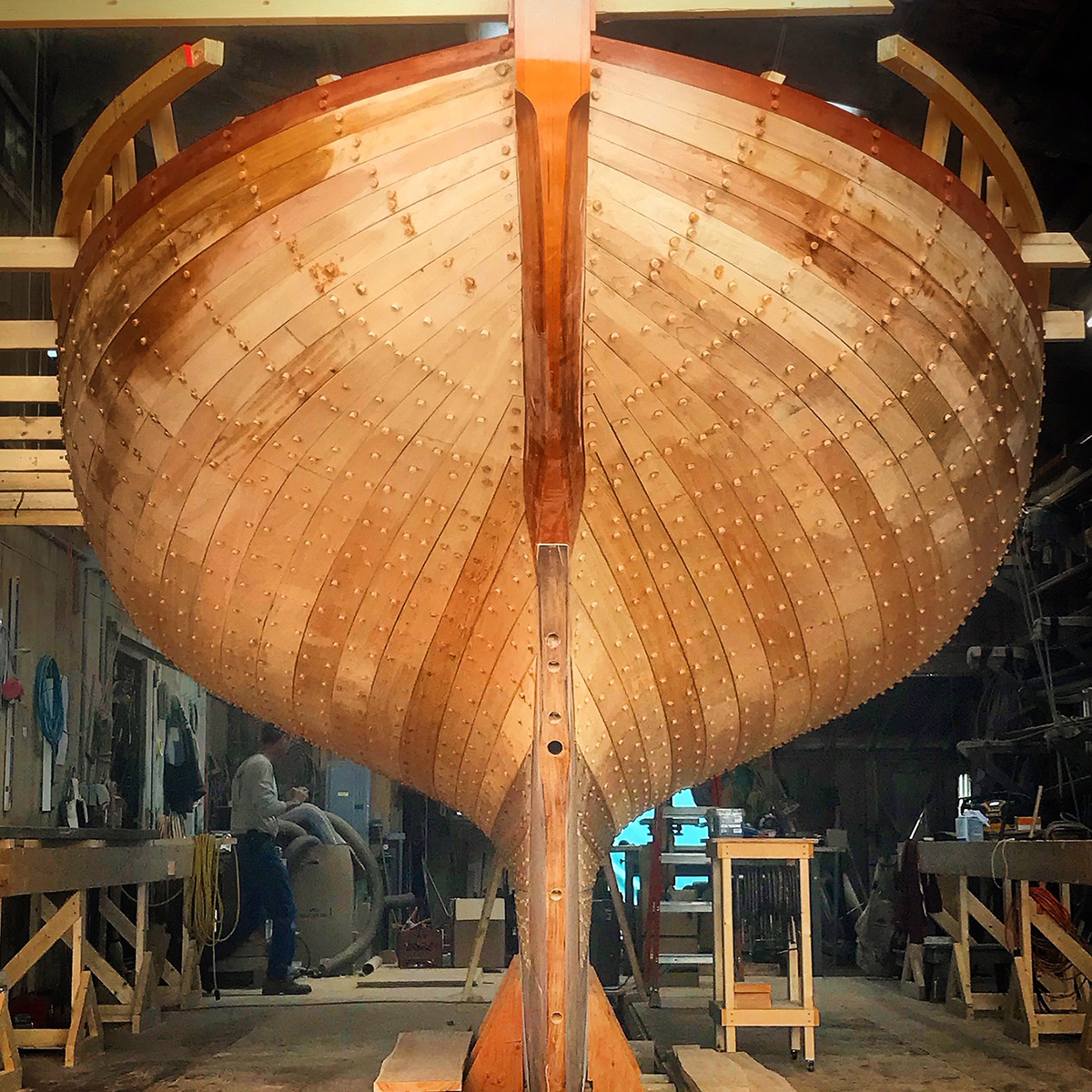
Using this traditional style, James would later build the Empress of Blandings—a 34-foot custom sailboat—with Atlantic White Cedar and White Oak from New England. Photo by Woody Metzger
An Overseas Adventure
James launched his boat in 2004, and in 2005 headed south, made it to the Caribbean, and then decided to just keep sailing for another four years. He visited Europe, Central American and the South Pacific, and wrapped up his journey in Hawaii.
“I had this wonderful experience of travelling around the world and being on the oceans,” James said. “I think one of my longest voyages was 24 days in the South Pacific without any sightings of land, other boats, or airplanes. I was really interacting directly with nature.”
James’ handcrafted boat helped him establish a professional reputation, and so after selling it in Hawaii in 2009, he was able to set up a custom woodworking and boatbuilding business in the U.S. Virgin Islands. While his business kept him busy and he enjoyed being able to surf regularly, after a few years, James was missing his family and not finding his work satisfying.
“I had a period where I built vacation villas on mountain sides, which meant tearing out tropical jungle with track machines,” James said. “I started losing heart in that pretty quickly.”
Between feeling homesick for New England and upset about this environmental degradation, James decided to sell his house and business, and moved back to Massachusetts in 2016.
Setting up Shop on Cape Cod
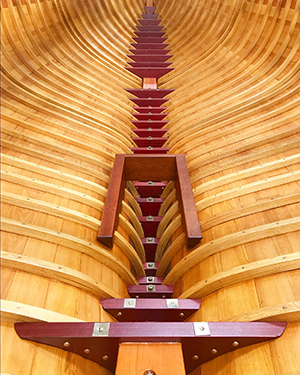
Interior woodwork for the Empress of Blandings, which was traditionally built with Atlantic White Cedar and White Oak from New England. Photo by Woody Metzger
James partnered with Woody Metzger, a friend from Arey’s Pond Boat Yard, to open First Light Boatworks in 2017; the company builds custom wooden boats, offers a line of modern wooden power boats, and runs a boatyard. Soon after opening, they started work on one of James’ all-time favorite projects: the Empress of Blandings, a 34-foot custom sailboat. It was built traditionally with Atlantic White Cedar and White Oak from New England.
When using traditional methods to shape planks and steam-bend frames for boats like the Empress, James explained, the process truly starts with personally picking out woods that will bend correctly.
“Some of my earliest experiences with forestry came from going up to a forest in northern Connecticut and looking at oak trees and thinking about how they would work on the boat,” James said. “That’s where I made the connection between wood as a building material and the trees and forests.”
When James was getting First Light Boatworks up and running, he was also jumpstarting his engagement with the conservation movement. While he had always loved nature and long felt concern for the environment, returning to Massachusetts served as a wakeup call.
“I went into early adulthood saying to myself, the adults have got these environmental issues under control, so I can go off on my adventure,” James said. “Then I came back to Cape Cod and very dramatically noticed that was not the case, that so much had been lost since my childhood, even though plenty of people and organizations fought to conserve land here.”
His conclusion? “It was my time to get seriously involved.”
Taking Action
James first wanted to make a difference in his community, and he has certainly made headway at home, where he now serves on the Harwich Conservation Commission and supports the Harwich Conservation Trust. He then turned his attention to the wider region.
“Protecting the Hiram lands seemed like one of the most impactful things I could do personally, and I also wanted to have a connection to that impact,” James said. “I’ve already gotten to know the land by hiking around, going hunting, and studying the forest.”
Merrill Mountain Community Forest is part of the Hiram Hills, which have been identified by the State of Maine and The Nature Conservancy as a priority connected and resilient landscape with known concentrations of rare or unique species and communities. Due to the area’s geology, topography and microclimates, species will be able to migrate within this area to find new, suitable habitat as the climate changes.
James is pleased that NEFF will not only provide long-term protection for the property and its critical habitat, but also ensure the forest produces timber in keeping with Exemplary Forestry standards.
“One of the most striking parts of my relationship with the planet has been witnessing what a remarkable resource we have in trees,” James said. “As a boat builder, I use dozens of different types of wood, and it’s astounding to see first-hand the varied properties of wood and how amazingly they work in different specialized ways.”
And when it all comes together?
“Seeing the finished product of a wooden sailing vessel at sea is a wonderful experience, with the spruce spars lightly bending from the pressure of the wind in the sails, transferring the load to strong oak ribs and backbone timbers, the carefully fit cedar planking swollen tight keeping the interior dry,” James said. “Sometimes it feels like a wooden boat is more like a living being than a feat of human engineering.”
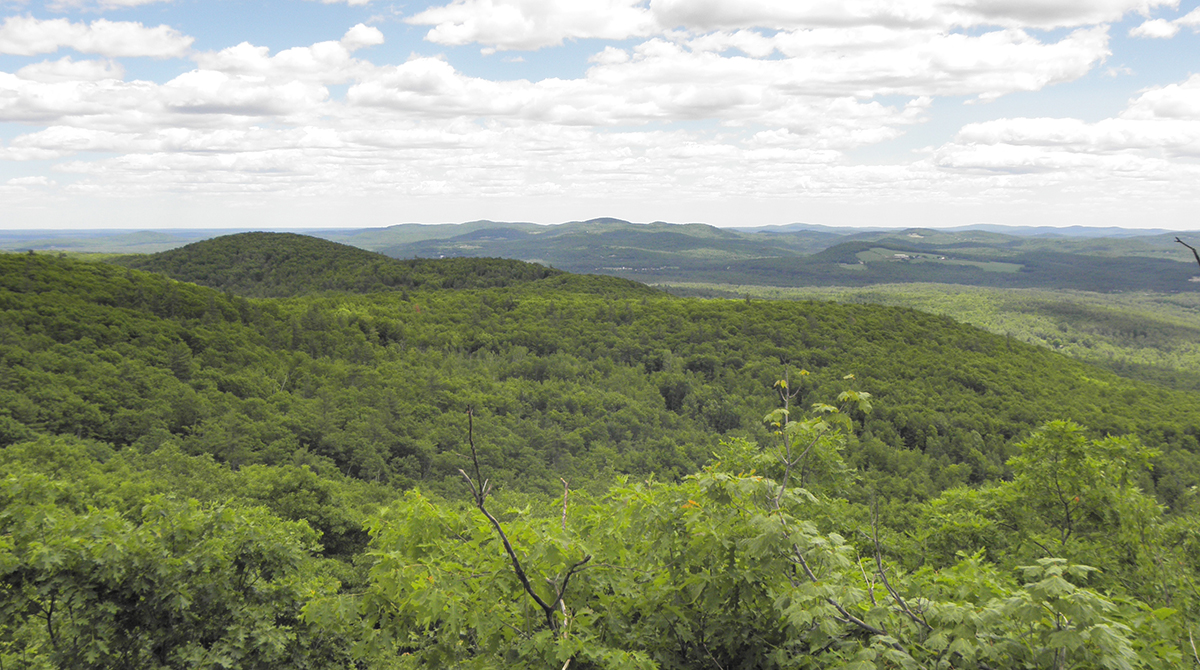
Merrill Mountain Community Forest


